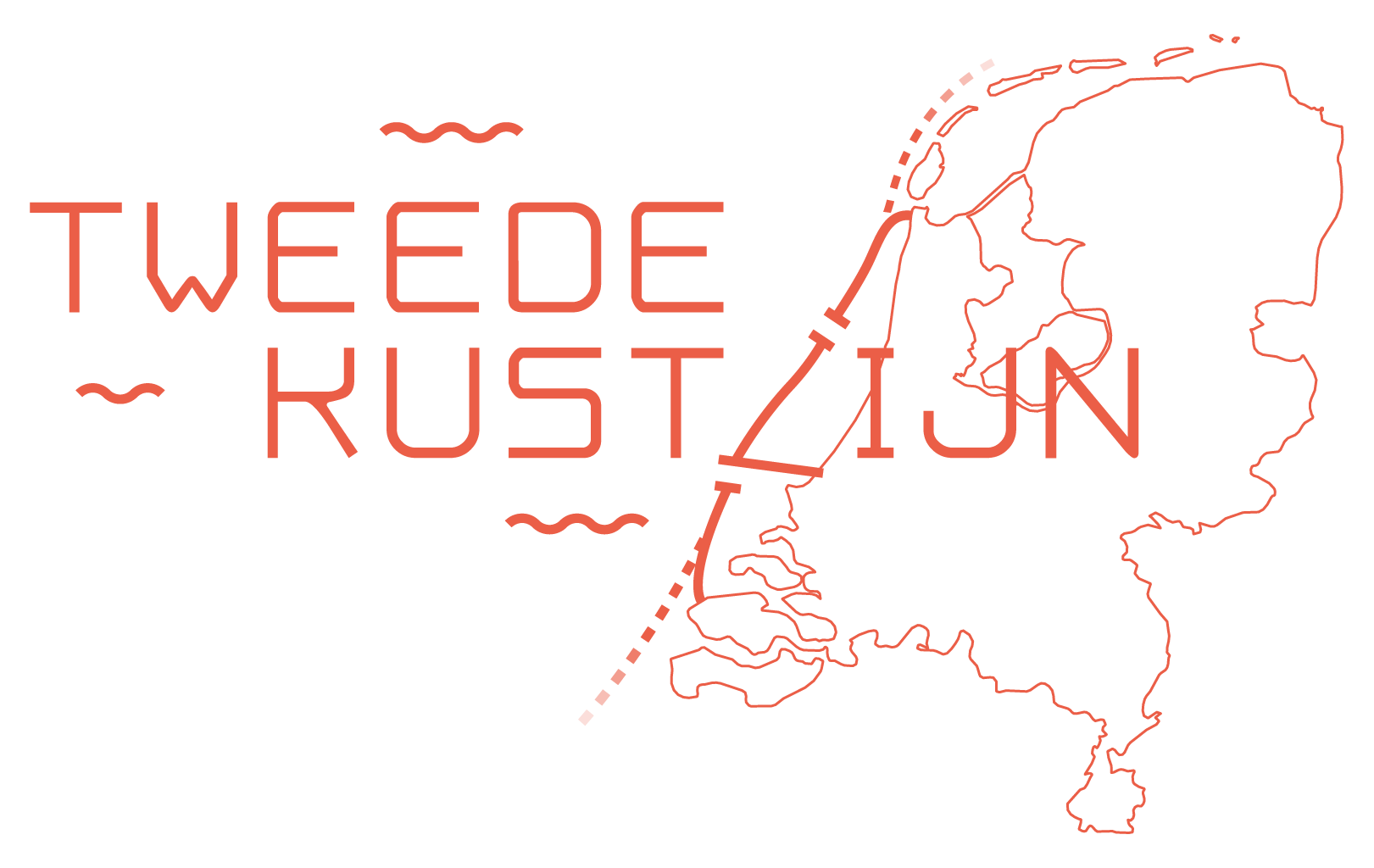Vision of the Second Coastline Initiative Group on Sea Level Rise
New land, sustainable prosperity, built on tradition
We want to turn the debate about the consequences of sea level rise from ’threats’ to ‘opportunities’. We must use the time that remains until sea level rise and weather extremes take drastic forms to prepare for a new future. Out of the vicissitudes of water, wind and soil, our ancestors single-handedly built a country in this delta where we can live safely and in prosperity. We want to preserve the country and increase its beauty. Even when nature presents us with major challenges such as prolonged droughts, rising sea levels and high and low water levels in the rivers.
Of course, man-made global warming must be curbed. But even if we stopped globally with greenhouse gas emissions, sea level rise would continue for centuries. Therefore, adjustments are needed that require sacrifices from everyone, but it also gives us the opportunity to build a new country.
The Netherlands chooses
In the coming years, politicians will have to make far-reaching decisions about the organization of our country. Parties involved in flood risk management and freshwater supply, including knowledge institutes and water authorities, presented various solutions to adapt to the volatile nature of the climate and rising water levels.
Most solutions protect us up to a sea level rise of about two meters. They require a lot of space inland, including the construction of higher and wider dikes along the rivers, because the river water rises with the sea level. In addition, there is an increasing chance that a high sea level will coincide with a high river discharge. Then the river water needs a way out: space for water storage of thousands of square kilometers. We do not have that vast space on land.
After all, we also see an ever-increasing demand for space from housing, the economy and nature.
The large demand for space due to water can be limited by installing pumps at the river mouths, but this requires pumps with a capacity of at least 15,000 m3/s, bear in mind: 60 times the size of the pumping station at IJmuiden/Amsterdam, already the largest in Europe. It is uncertain whether the future electricity grid can guarantee the required security of supply for these mega-pumps.
Another ‘solution’ is to give up the west of the Netherlands to the sea and withdraw to the east of the country. That choice demands an unimaginably high price in humanitarian sacrifices and destruction of productive capital. It is highly questionable whether there is social and financial support for this.
New land
There is also a solution whereby we can continue to live and work as we do now. Together with nature, we are gradually building a new dune coast with lakes 10-25 km seawards in front of our current coastline.
In that plan, the river water is drained to the new coastal lakes and from there discharged into the sea. This is possible with considerably smaller pump capacities. And this second coastline can withstand a much higher sea level rise: more than 5 meters. Should this be necessary in the distant future, the sea defenses can continue to grow with the rise in sea level. With this solution, no existing space on land is sacrificed.
This plan is less futuristic or daring than it may seem at first glance. It also fits in with our rich history in our dealings with water.
Imagine a row of loose islands off the coast, interconnected by dams, locks and pumps. Due to the temporary buffering of river water in the coastal lakes, the pumps do not have to be started immediately if a problem arises. They can also take a longer time to pump out. Should the pumps fail, thanks to the large collection basins, we have plenty of time to collect the river water. In the event of an unexpected catastrophe (such as a hurricane with major consequential damage, for example to the energy supply), we can store the water for a while, even if the pumps are temporarily out. We call this passive safety.
Contemporary hydraulic engineering focuses on collaboration with nature itself. Better building using the forces of nature instead of building against the forces of nature. The new coastline will be realized using currents and sedimentation. The Netherlands has this knowledge partly thanks to projects such as the Sand Motor on the South Holland coastline and the Marker Wadden created with sludge from the IJsselmeer.
Step-by-step
1. Second coastline (10-25 km seawards) for flood protection by means of ‘Building with Nature’;
2. Two passages for shipping to Rotterdam and IJmuiden/Amsterdam
3. Three buffer basins between the current and new coast at a permanent 0 m NAP in which the rivers can flow freely for years to come; form a large freshwater reservoir; sufficiently large buffer for river discharge in the event of a failure in the energy supply of pumps;
4. Medium power pumps to discharge water from these basins to the sea;
5. The new coastline can be extended towards Flanders and Germany to form a ‘European Seawall’.
6. The plan offers space for a multitude of free-riding functions such as nature, housing, agriculture, ports and logistics, fish farms and energy transition, including hydrogen production and storage;
7. It is adaptive: the implementation can grow with the actual sea level rise and river discharges. Pumps, locks and sea walls can be expanded by building, extending, widening and raising them.
Sustainable investing
This new coastline with water basins behind it also offers opportunities for new projects in the field of nature, recreation, energy, housing and transport. Think of fish migration areas in the gradual fresh/salt transition from river to sea, of water recreation, of floating residential areas. We can establish the companies of the future there: emission-free hydrogen factories linked to offshore wind farms, energy storage, deep-sea ports, a sustainable airport next to or as a replacement for Schiphol Airport and a railway track for high-speed transport (hyperloop). Depending on the chosen location, a second coastline creates about 1000 km² of new land and about 3000 km² of newly formed coastal lakes. With this we can also relieve the overcrowded Netherlands a bit.
If the sea level continues to rise, the second coastline can be extended southwards to Calais (France) and northwards along Germany and Denmark to Gothenburg (Sweden).
Abroad, The Netherlands will reaffirm its reputation as having the best hydraulic engineers in the world. Sea level rise is therefore not only a threat, but also an opportunity. An opportunity to finally find a structural solution for Schiphol Airport, for clean energy, for housing construction, for the creation of new nature, and for several items from a political infrastructural wish list through a smart combination of functions.
This plan represents a radical change of the current coast and its inhabitants. We must be well aware of that. It is therefore not just ‘building with nature’, but also ‘building with the residents involved’. A ‘supporting base’ should not be an empty term. For example, by forming area coalitions, as is now the case in the Southern Delta, where residents, users and area owners in sub-areas on the edges of the coastal section seek connections together in an area coalition and think about the opportunities and possibilities for people and nature in their area.
Phase 1 Construction of the Second Coastline 2040-2050:
Sea locks Nieuwe Waterweg, floating wave dampers, water storage Grevelingen; alternatives remain possible
Trigger:
-Coastal erosion,
-Freshwater shortage
-Storage river water
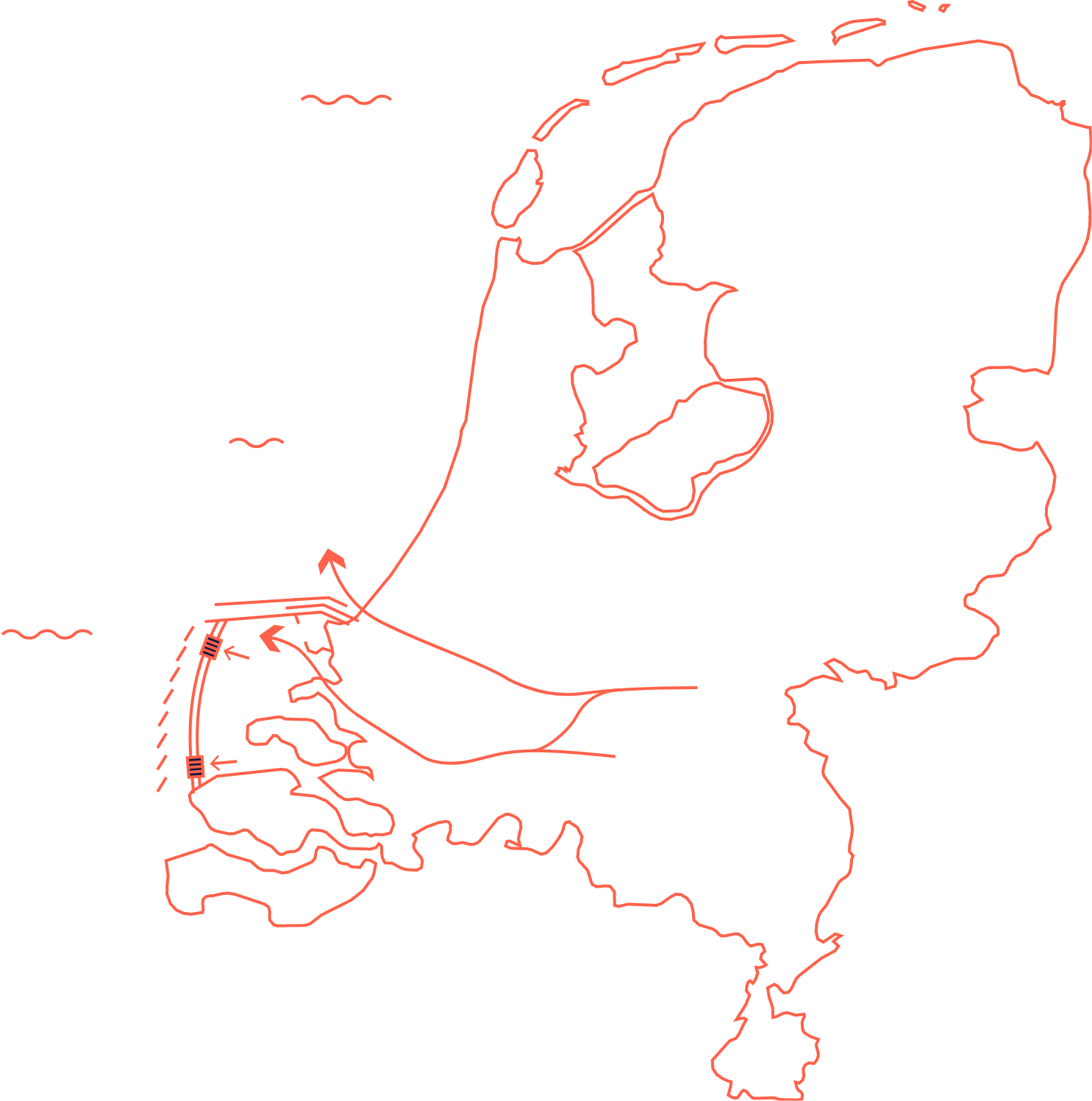
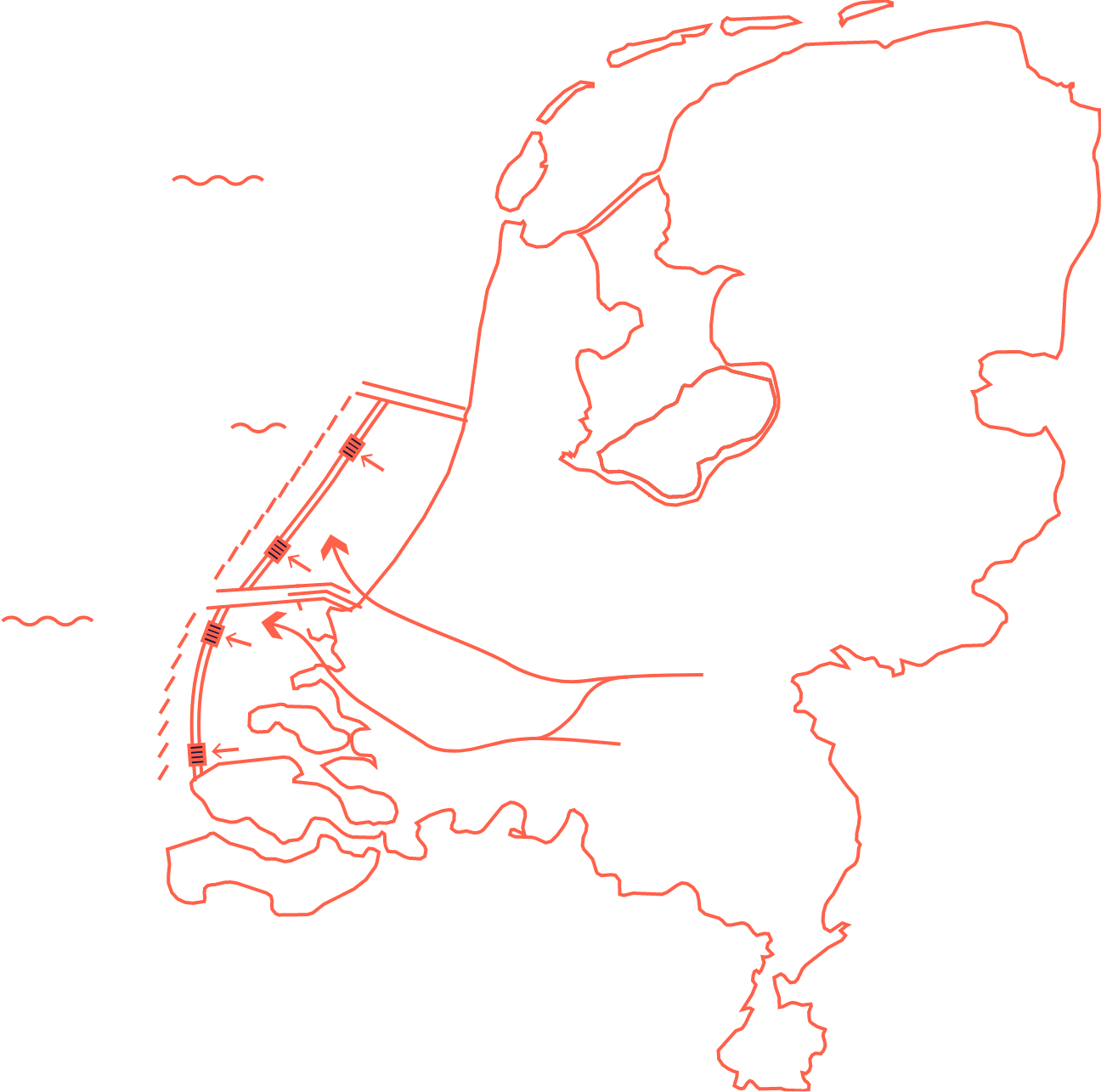
Phase 2 Construction of the Second Coastline approx. 2050-2065:
Construction of the South Basin; use land profit, option ‘Protect Closed’ remains possible
Trigger:
-Flood problem Rijnmond/Drechtsteden: more buffer needed outside SW Delta
Phase 2 Construction of the Second Coastline approx. 2050-2065:
Construction of the South Basin; use land profit, option ‘Protect Closed’ remains possible
Trigger:
-Flood problem Rijnmond/Drechtsteden: more buffer needed outside SW Delta

Phase 3, 4 Construction of the Second Coastline approx. 2065-2095:
Build Mid and North Basin, sea lock IJmuiden, use land gain
Trigger:
-South basin too small: rivers can no longer dispose of discharge,
-Salinization of the Western Netherlands
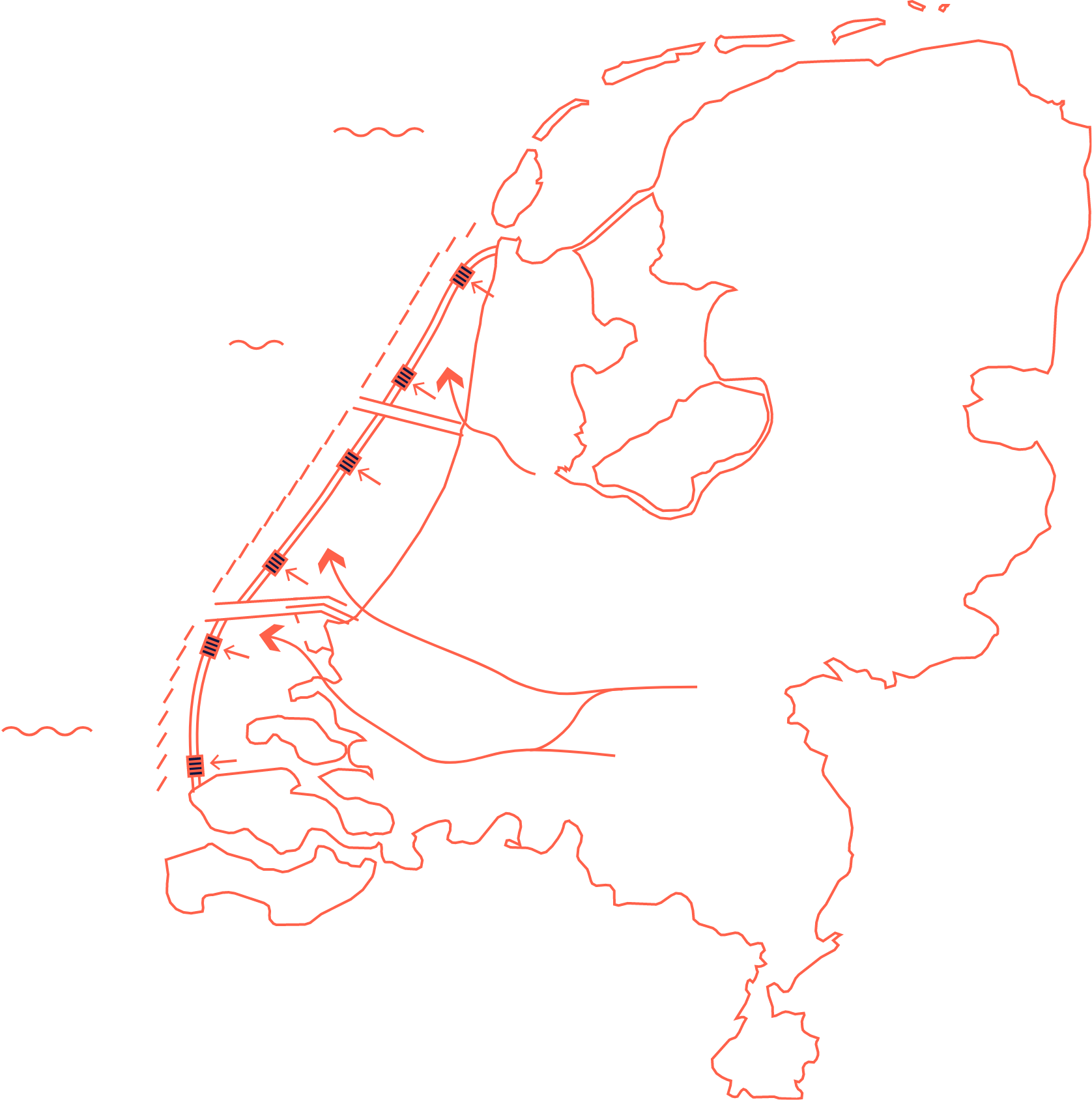
Final picture
The European Seawall. after 2100:
New coast from Calais to Gothenburg.
Entire Northwest Europe protected from sea level rise
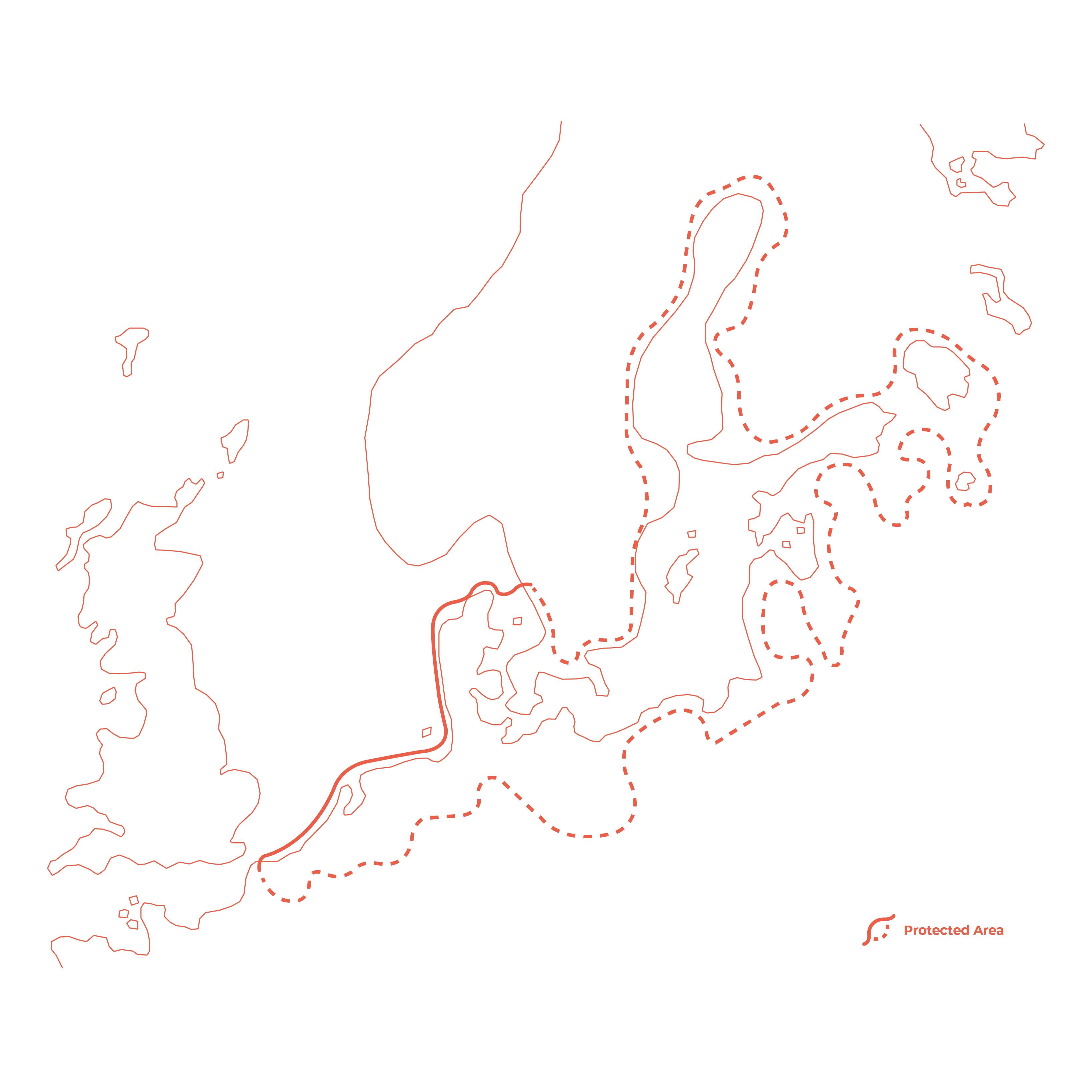

Final picture
The European Seawall. after 2100:
New coast from Calais to Gothenburg.
Entire Northwest Europe protected from sea level rise
We can do this
Is such a comprehensive program affordable? The construction of a second coastline costs a lot of money. Initial calculations show that the total project will require at least 90 billion euros. But if we start in time – and those who want to build together with nature must start in time – we can spread that €90 billion over a planning and construction period of about 70 years, perhaps longer if the actual climate change is not too bad, and there are also benefits included. The new country offers clean business that can make a significant contribution to our national income. And every part of this second coastline immediately creates safety, nature and employment for the area behind it.
Thus, it is a big investment, but doing nothing is not an option. The alternatives are also expensive and, moreover, often come at the expense of residential areas and economic activities that have to make way for dyke improvements and water storage.
Start now
A sea level rise of more than 2 meters in 2100* makes it necessary to invest now in preparations for the seaward solution, which offers the inhabitants of the Netherlands security and prosperity for generations to come. Thinking about solutions for sea level rise is currently tending towards the east or towards high, wide dikes and pumps in the interior, while there are also other (in our opinion: better) options. It should seriously examine our society.
Building with Nature is an important principle on which the construction of the second coastline is based. But this construction method takes time.
This is a daring plan, for sure. But with climate change in mind, our low-lying country by the sea must prepare for the future. Cornelis Lely’s Zuiderzee Plan and Johan van Veen’s Delta Plan were also daring plans, they all encountered resistance in their own way. But with that, the Netherlands has become the safe, prosperous country it is today.
*In the worst case scenario, according to the most recent report of the Intergovernmental Panel on Climate Change (IPCC), which was published between August 2021 and April 2022. The IPCC consists of 721 experts from 90 countries.
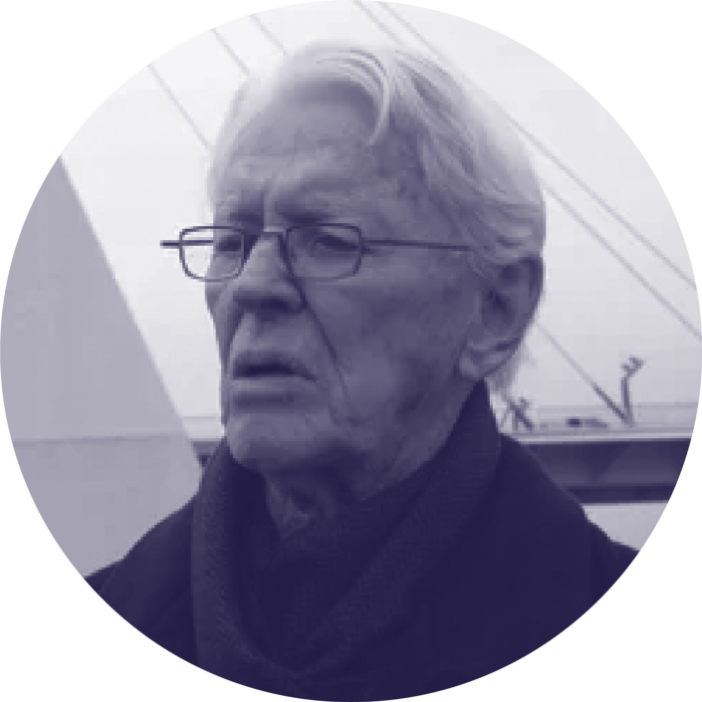
Rob van den haak
Engineer
1929-2019

Dick butijn
Founder Participant Dutch Knowledge Program Sea Level Rise

Henne Pauli
Secretary Second Coastline Initiative
